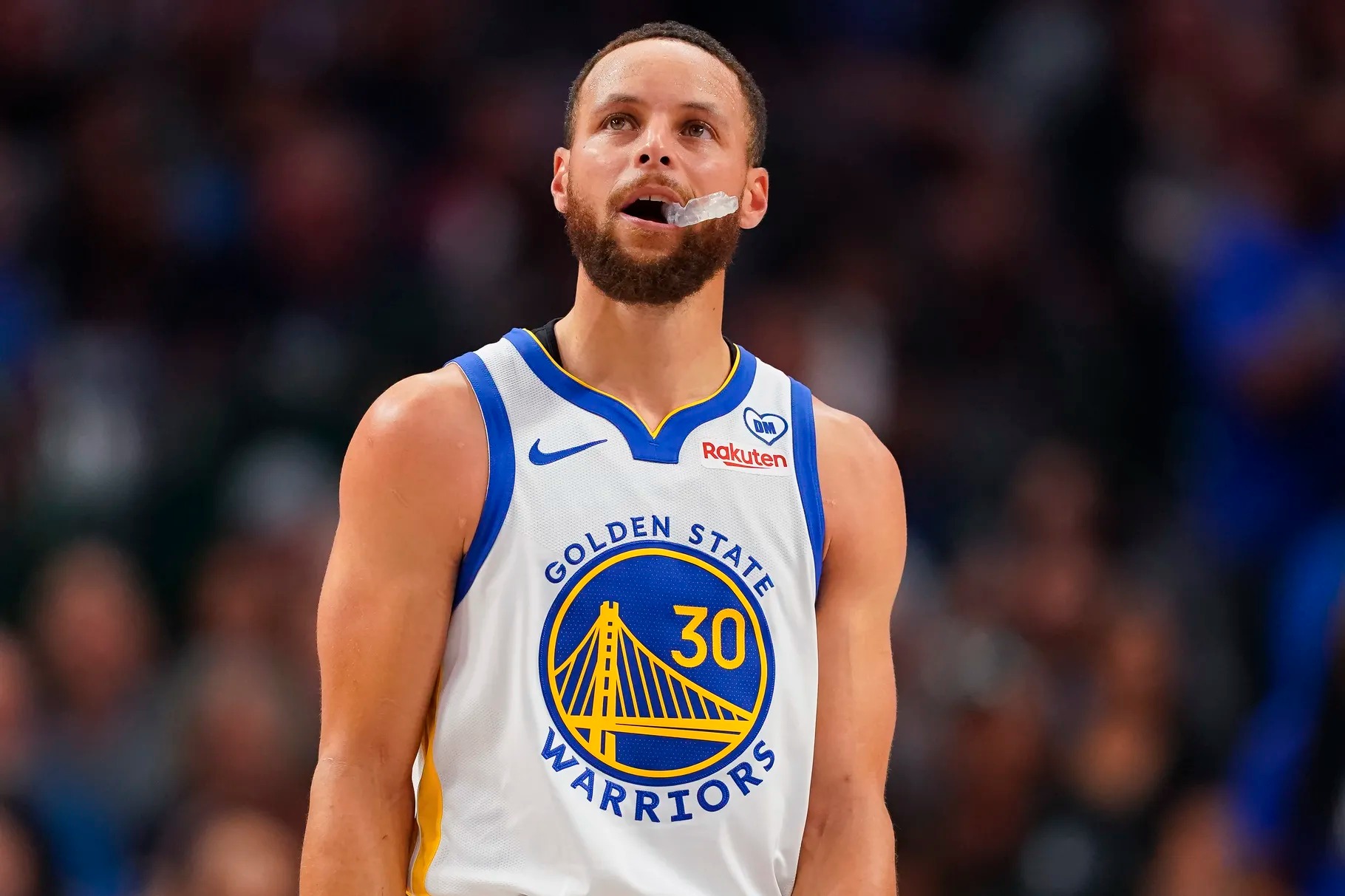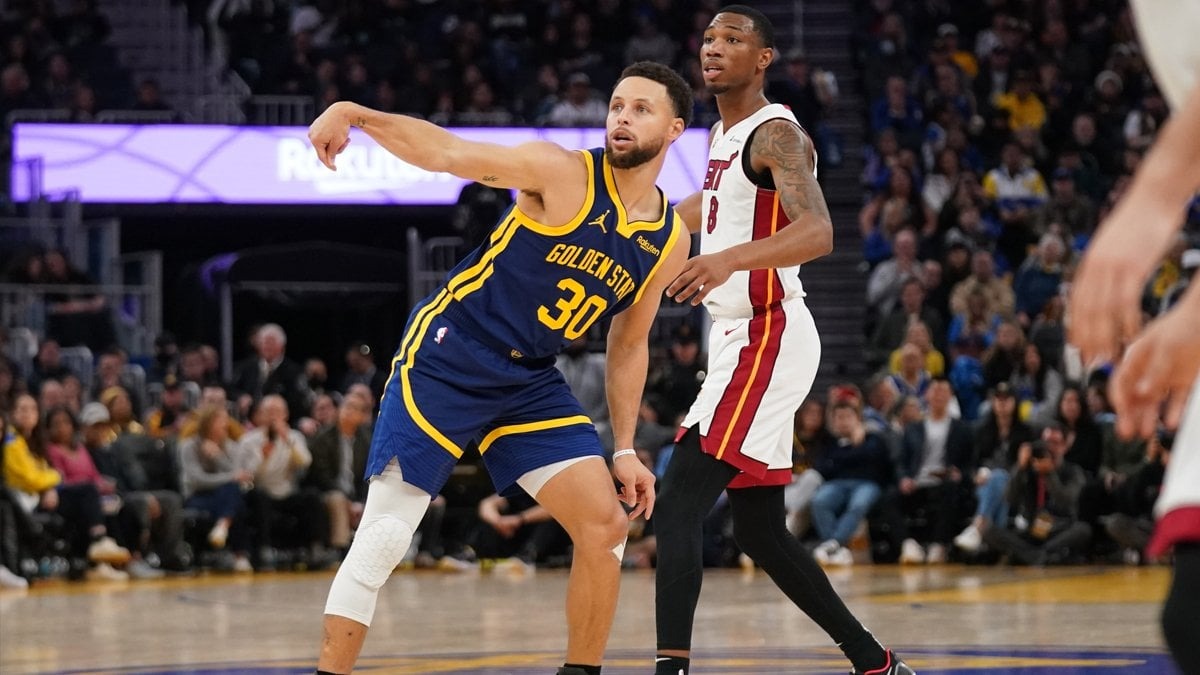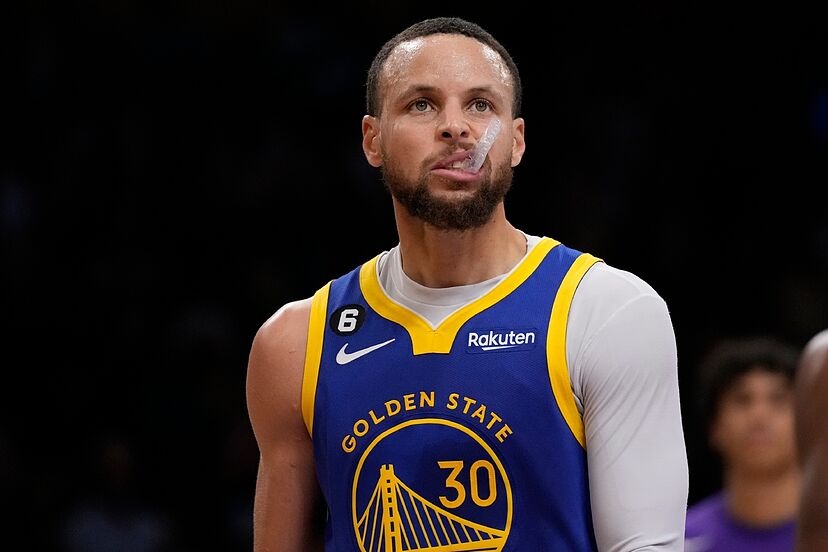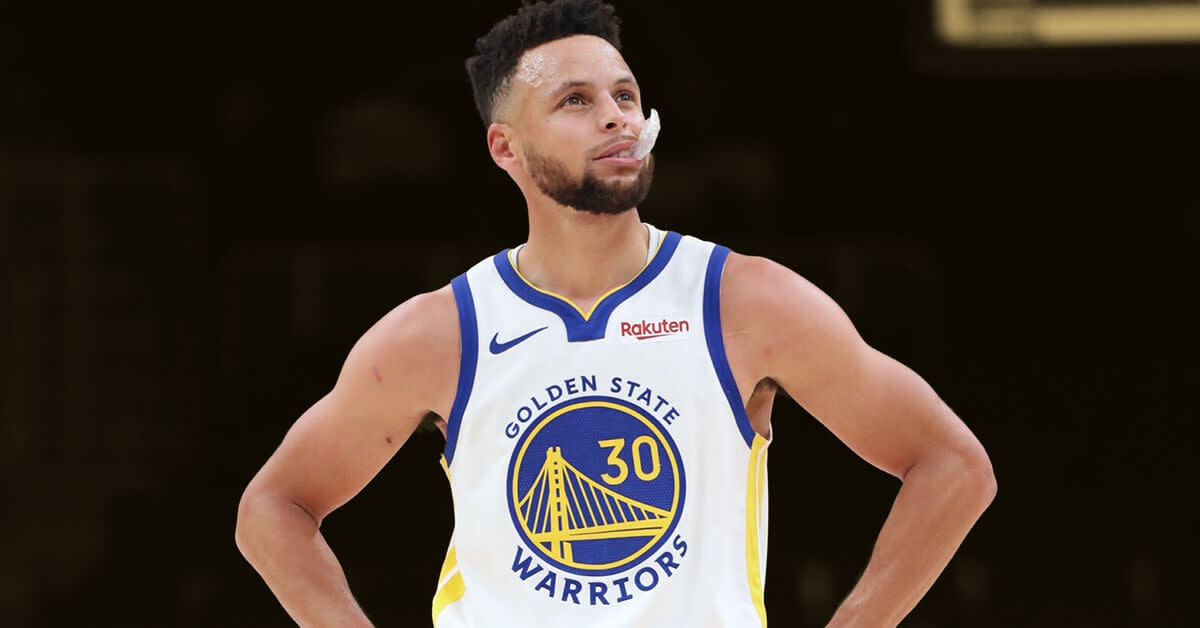 It feels a bit weird to harp on something that has to do with defense — especially when the Golden State Warriors have been allowing opponents to score 104.4 points per 100 possessions over the last seven games, in which they’ve gone 6-1. It is the fourth-ranked defensive rating over that stretch.
It feels a bit weird to harp on something that has to do with defense — especially when the Golden State Warriors have been allowing opponents to score 104.4 points per 100 possessions over the last seven games, in which they’ve gone 6-1. It is the fourth-ranked defensive rating over that stretch.
But something about Steph Curry can’t escape my attention. The struggles on offense post All-Star break have been prominent: 22.7 points, 4.4 rebounds, and 5.0 assists — while shooting 49.7% on twos, 36.0% on threes (on 11.5 attempts per game), 93.5% on free throws (on only 3.0 attempts per game), and 55.6% True Shooting, which is well below his scoring-efficiency standards.
Having to carry the offensive load when you’re 36-years old and having inconsistent scoring support will do that to you. On any given night, Curry certainly can explode and put up a vintage scoring performance on vintage efficiency, but while those nights can still be a norm at this stage of his career, they’re becoming less of a nightly thing and more of something that happens every one or two games.

A downtick in scoring efficiency but little-to-no change in offensive load means that Curry isn’t getting the requisite help he has always needed — even more so now that he’s approaching his late thirties — and that he must do more every night for the Warriors to have a chance offensively.
But more important: having to expend more energy on offense with a body that isn’t getting any younger means there’s a costly payoff on the other end of the floor.
I wouldn’t call Curry an above-average defender, but he isn’t the black hole that some people have painted him out to be. His lack of height and length holds him back and places a ceiling on his potential as a defender — but no one can criticize his effort, tenacity, and desire to compensate for his physical shortcomings.

That’s why even when he’s posted negative marks in the defensive Estimated Plus-Minus metric (favored by many as an all-in-one metric since it does the best job of eliminating confounding factors), they haven’t ventured far from zero. He’s posted a couple of positive d-EPM metrics throughout his career: four straight seasons from 2014-2017. His highest career d-EPM came during the 2021-22 championship season, where he posted a plus-1.8. The eye test lent credence to that season, where his rotations where crisp, his mistakes were minimal, and while he still was a mismatch target, he fought hard to make sure that he wasn’t an easy target to score on.
This season, however, Curry has been a minus-0.4 in d-EPM. That’s not egregiously negative, but it feels like the days of him being a positive-impact defender are behind him (he was a minus-0.2 last season). Should he find a path toward becoming a positive or neutral once again, things have to fall in place around him perfectly.

When it comes to on-off metrics, the Warriors turn from the equivalent of the fourth-best defense in the league (110.9 defensive rating) with Curry off the floor to the equivalent of the 16th-ranked defense in the league (114.9 defensive rating) with Curry on the floor. When accounting for half-court situations, they have a 96.3 defensive rating in 2,609 possessions of Curry on the floor, while they have a 99.8 defensive rating in 4,784 possessions with Curry off the floor. That is the equivalent of them having the equivalent of the fifth-best half-court defense in the league without Curry, to becoming the equivalent of the 11th-worst half-court defense with Curry.
The change in half-court defense is even more pronounced whenever he’s paired with another small guard in the backcourt — e.g., Chris Paul; the Warriors have a 100.3 half-court defensive rating in 1,110 possessions of Curry and Paul as the backcourt, equivalent to the 10th-worst half-court defense.
When Curry is the backline help — i.e., as the low man on the weak-side corner whose job is to show help against drives or rolls, the lack of size and length makes it difficult for him to be effective in that role. When he has to tag, he’s too small to affect the roll; when he has to pinch in to help the helper, he’s too small, with arms that are too short, to affect corner shooters on recovery closeouts.
Those are physical shortcomings that aren’t in his control and are more of something that can be fixed schematically or personnel-wise. But the ones that he can control are on mistakes like this one:
Sagging off of his own man on the wing to show help against a non-mismatch single coverage isn’t something that should be in his job description as a defender — especially when he doesn’t have the physical traits to compensate (height, length, speed, etc.). That’s an easy read one pass away by Luka Dončić to Dante Exum, a 50% (!!!) shooter on threes on two attempts per game.
Nor should he be reckless enough to try to stunt or dig at drives (for the same reason stated above), especially if the weak-side help is sufficient:
Curry’s fatal flaw this season has been having trouble keeping tabs of both his man and the ball. He sometimes delves too much toward one end of the spectrum — in particular, he has spent too much time watching the ball this season.
This ball-watching habit means he has defenders cutting on him or relocating somewhere else for a shot that is much harder to contest due to the increased closeout distance:
Already disadvantaged vertically and horizontally, these are warts Curry can’t afford to have. But at the same time, you also can’t completely blame him. Having to carry an offense and make sure it has a chance can be a toll on the mind and the body.
The Warriors have always made sure to make Curry’s job easier as a defender by scheming him away from tough matchups. That has freed him to become the offensive singularity he has always been. But at this stage of his career, he needs more help in that department.
It’s looking like the help may not come this season, if at all. The organization’s job is to find out solutions beyond this season to either hide or boost Curry’s impact as a defender.